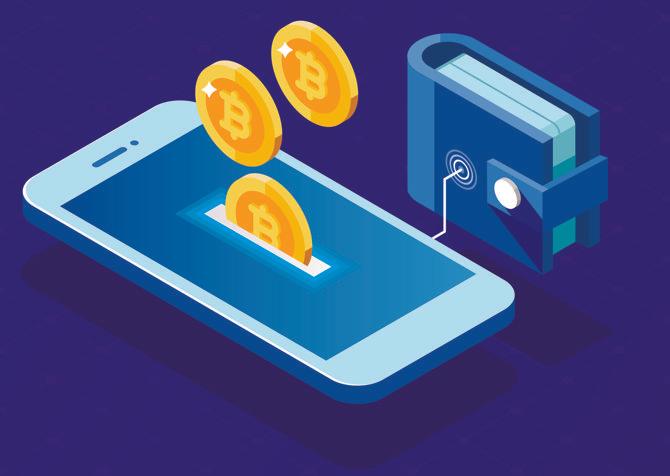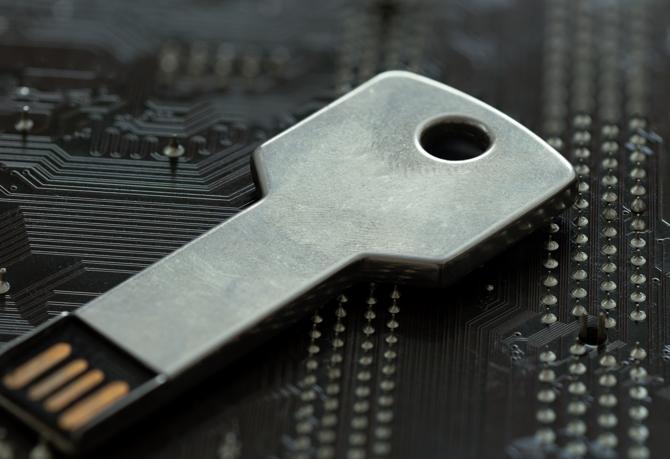
With personal cyber security being a number one priority in today’s world of remote working and digital connectivity, it has become more important to keep your data safe and secure. In the case of cryptocurrencies, there are many options that you can choose from to keep your hard-earned coin safe. Of all the software and hardware choices out there, a hardware wallet is one of the simplest and most effective ways to store your currency. Although many of you reading this article might already be familiar with the concept of a hardware wallet and how they sit in the cryptocurrency ecosystem, it’s important to know exactly what they are and how they work before you choose one to use. For those of you with some prior knowledge and some additional questions, this article should provide you with those all-important details about how to fully protect your digital assets with a hardware wallet.
A hardware wallet is a piece of physical technology (sometimes resembling a USB thumb drive) that securely guards a crypto user’s private cryptographic keys in offline or “cold” storage, ready to be used online for completing a crypto transaction of some sort at a later date. Unlike a conventional wallet for physical or fiat currency, a crypto hardware wallet does not contain any of a user’s existing coins. Hardware wallets keep the user’s private keys (needed for accessing their coins) safe for later access to the blockchain. Most hardware wallets can even work with multiple blockchains simultaneously. This allows a user to manage many different types of coins from many different exchanges on a single device. All of the data stored in a hardware wallet can be easily backed up with a single recovery phrase or PIN code.
Contents
What are Cryptographic Keys?
Cryptographic keys, are a sequence of numbers and letters (around 25-36 characters to be precise) that allow a user to access and make transactions with their digital coin. A user’s earned cryptocurrency is simply data that exists on a blockchain. Holders access the blockchain to make transactions through a set of digital keys, one public and one private. The public keys are accessible to everyone (hence the distributed or “shared” part of the ledger technology that cryptocurrencies are based on) and act as a kind of bank account number. The private keys (sometimes referred to as secret keys) can be likened to a pin code, which is why they need to be kept as secure as possible.
This use of keys in this way is what gave rise to the familiar phrase “not your keys, not your crypto” in crypto circles around the world, highlighting the fact that private keys are an essential part of cryptocurrency cybersecurity as they are one of the only ways that a user and their coin can be legitimately identified and verified. Without a hardware wallet, private keys are held and maintained by the exchange. So, if something goes wrong with that exchange, a user’s assets are vulnerable and could be potentially lost with no way to recover them.

How do Hardware Wallets work?
Cryptocurrency hardware wallets work by generating private keys and providing a user with an offline, “cold”, physical space to store and protect these private keys. They are small pieces of hardware with a few essential functions, a couple of buttons, and maybe a small screen, much like a very basic computer. The most important aspect of a hardware wallet is that they are “cold”, which means that they cannot connect to the internet on their own, making them virtually impossible for hackers to access short of physically stealing the hardware wallet itself.
When a user wants to interact with their cryptocurrency, i.e. spending, transferring, or swapping assets with another user’s wallet, the transaction must be cryptographically “signed” using a unique private key. When a hardware wallet is connected to a computer with an internet connection, it facilitates this signing transaction inside the device itself via something known as “crypto bridging”, a software process that enables the hardware wallet to connect directly to the blockchain. This “crypto bridge” transfers unsigned transaction data to the hardware wallet. The hardware wallet then cryptographically signs the transaction data with the user’s private key and uploads the data back to the crypto bridge. From there, the crypto bridge broadcasts the signed transaction data to the blockchain network as a completed transaction. In short, the hardware wallet uses the private key to open the lock to a user’s private address on the blockchain. As the blockchain exists digitally, or everywhere, the hardware wallet allows the user to access their assets anywhere with an internet connection. The most important part about this process is that at no point do the user’s private keys leave the hardware wallet. They are therefore secure from malicious online actors.
Best Practices for Hardware Wallets
As a hardware wallet is a physical object, it’s important to keep it safe and store it in an appropriately safe place at room temperature. This location should also be secured from fire, rain, and the rest of the elements. However, if the worst does happen and the hardware wallet is stolen, users can always use their recovery code or PIN to retrieve their data. With that in mind, it’s equally important to keep this code in a secure location (and not written down physically in your domicile).
We recommend using a password manager (sometimes referred to as a password vault) to keep all your digital pin codes safe from potential hackers. Although password managers can be hacked, your passwords will stay safe because they are encrypted (deciphering industry-standard encryption, like 256-bit AES, Advanced Encryption Standard, is almost impossible). They also contain a “password generator”, which can be used to create your recovery PIN/a strong password (10-12 characters containing a mix of special characters, numbers, uppercase and lowercase letters). Some hardware wallets automatically generate a recovery code or seed phrase (usually consisting of 12-24 randomly generated words).
Always buy a hardware wallet from a reputable manufacturer and never buy a “used” hardware wallet. As hardware wallets are essentially rudimentary computers, used hardware wallets are the perfect vector for many forms of malware, which could be used to create a backdoor into your system or network. Hardware wallets usually include a clearly visible holographic sticker (or another kind of security feature) that can be used to alert a potential buyer. If the sticker is broken or looks like it has been removed or tampered with in any way, do not buy the hardware wallet and alert the manufacturer or seller.
Even though hardware wallets are widely considered to be the most secure way to store and protect your private keys, it’s still important to maintain good crypto hygiene. This means that you should never trade very large amounts of cryptocurrency before verifying the receiving address with a test transfer. If your hardware wallet has a screen, double-check that the recipient’s address matches up with what the hardware wallet is displaying before starting a transaction.

For an extra layer of added security, we recommend using a virtual private network (VPN) service to give you a secure, encrypted internet tunnel. A VPN will allow you to safely and anonymously browse the internet (even on public Wi-Fi) and will give you extra peace of mind when connecting your hardware wallet to the internet. To protect your assets and secure your digital life without worry, Kaspersky Premium offers award-winning antivirus, privacy, and identity protection in one simple package.
FAQs
Q: Are hardware wallets necessary for investing in cryptocurrency?
A: Hardware wallets are not necessary for investing in cryptocurrency, but they are highly recommended, especially if you are trading in large amounts of coin. A hardware wallet provides an added layer of offline security for your digital assets.
Q: Can I trade directly from a hardware wallet?
A: Yes, many hardware wallets allow users to trade directly from the wallet itself, eliminating the need to deposit assets into an exchange wallet. This is considered the safest way to trade digital assets, as you have custody of your tokens at all times.
Q: How can I backup the data stored in a hardware wallet?
A: The data stored in a hardware wallet can be easily backed up with a single recovery phrase or PIN code. It’s important to keep this backup in a secure location to prevent unauthorized access.
Conclusion
Hardware wallets provide a secure and convenient way to store and protect your private keys in the world of cryptocurrencies. By keeping your private keys offline and inaccessible to hackers, hardware wallets offer enhanced security for your digital assets. Remember to follow best practices, such as storing your hardware wallet in a safe place and using a password manager to protect your recovery codes. With the right precautions, you can confidently trade and manage your cryptocurrency knowing that your funds are secure.
Note: This article is for informational purposes only and does not constitute financial or investment advice. Always do your own research and consult with a professional before making any investment decisions.







